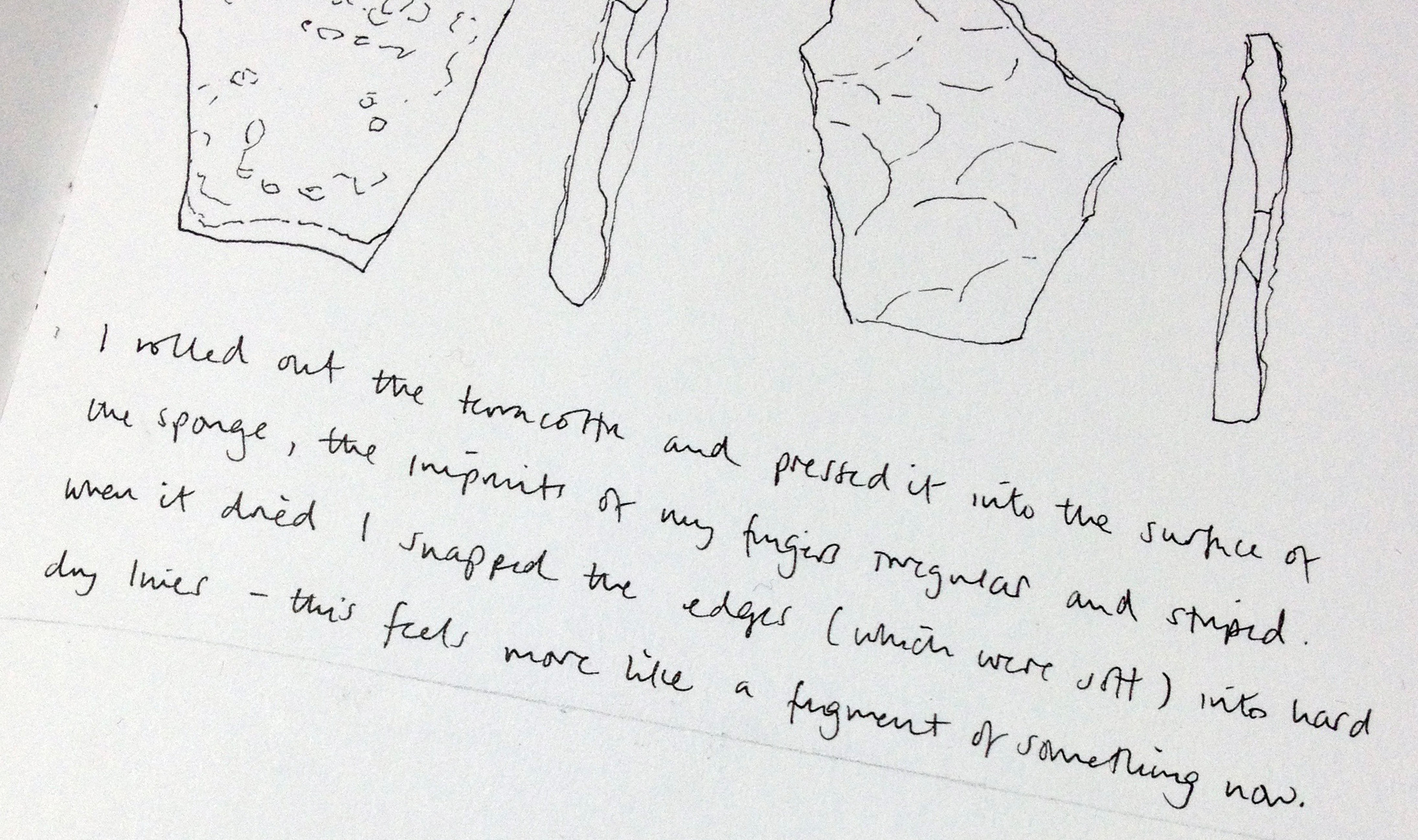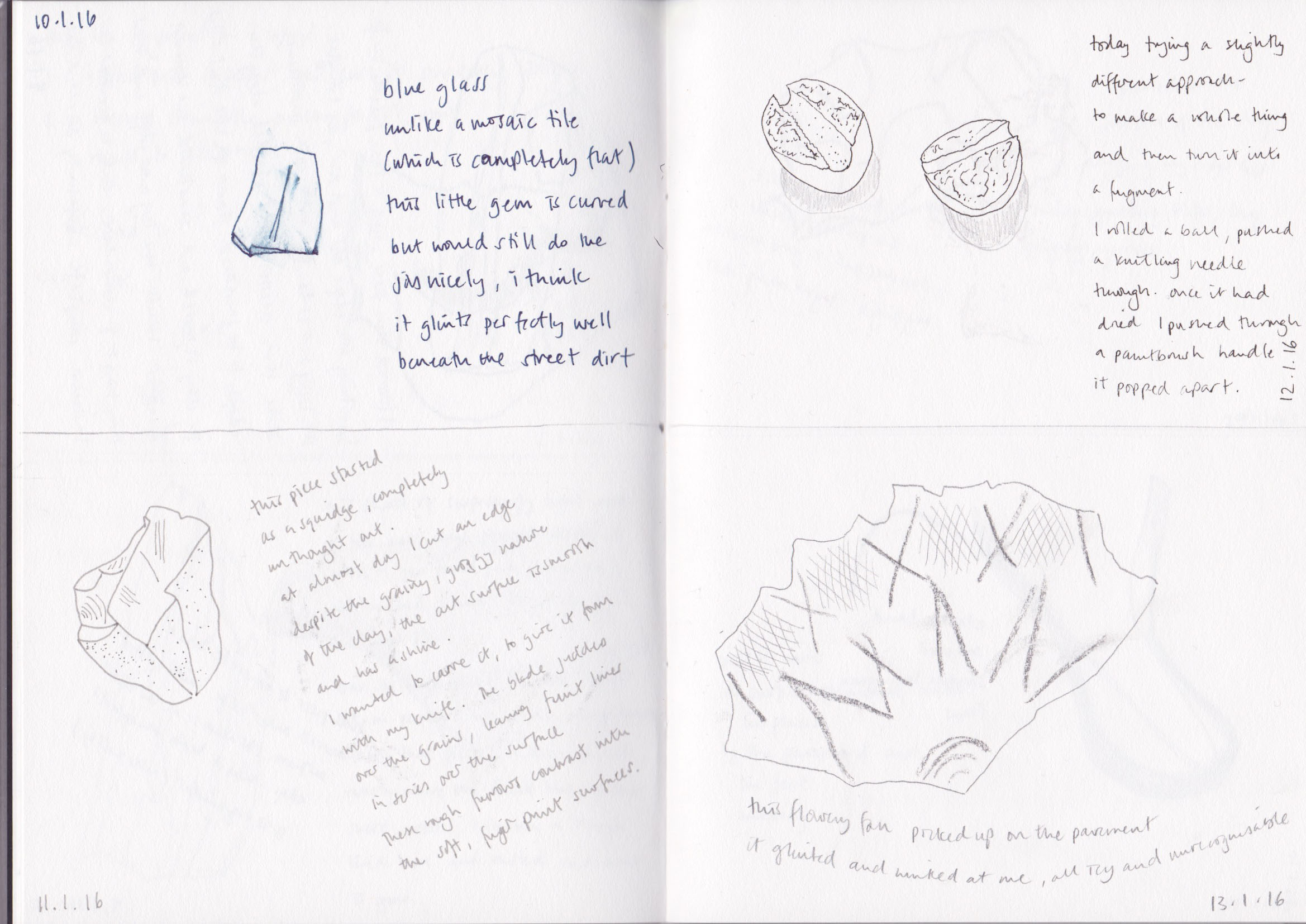Last week we looked at ways of setting up a writing routine, on your terms, so that you feel excited and inspired to write about your practice regularly. Now it’s time to figure out what you’ll actually write.
Audience
Whenever you’re faced with the task of writing something about your work, the most important place to start is to think about the audience. Who are you writing for and what do they expect? You figure this out and it makes deciding what to write, and how to write, much easier. In the case of the writing routine, you are your main audience. This is a personal practice, it is meant to help you understand your making and to generate words that you are happy with. So, what are your expectations? What do you want the writing to help with? What do you want to learn? It may be that you want to understand why you make, to explore the ideas in more depth, or it might be that you want to find the right words to describe a technical process or to convey a sense of the materials you use.
You also have a secondary audience: the people who will eventually read the words that you begin to write here. They may be clients who wish to buy your work, people choosing makers to be part of an exhibition or trade show, they may even be people deciding who to give funding to or a residency. At this stage it’s hard to pinpoint the secondary audience, but you can pretty much guarantee that they will be expecting to learn more about why you make your work, how you make it and what you feel about it. So you should probably cover these things within your writing.
Aspects to focus on
Having thought about the audience you’re writing for, and what their expectations are, it can feel as if you’re trying to cover lots of ground in your writing routine. And the most important part of this process is to write regularly, not to write lots. Having some key questions that you refer to can help you focus. I recommend looking at your work from these aspects: process and response. Process allows you to reflect on what you have made and your relationship to it, while response allows you to see your work from other perspectives.
Process
Describe what you have made: imagine that you are telling someone about your work who doesn’t know anything about making.
- How did you make it? What materials, techniques, tools did you use?
- How did it feel while you made it? (Think about the physical aspects of touch as well as the emotional feelings)
- What did you think about while you made it?
Response
Describe what you have made: imagine you are describing the work to someone who will not see the actual object (in real life or photographs) but will only read your words.
- Use sensory language – What does it look/feel/smell/sound/taste like?
- What does the work remind you of?
- What does it make you think about (memories, experiences)?
- How does it make you feel?
Some of these questions will be easy for you to answer, others will put up some resistance. Notice which ones they are, ask yourself why that is.
As with everything to do with building a writing routine, it’s most important that you find out whatever works for you. You might choose to cover a question a day, or to devote a chunk of time once a week to spend on writing just about ‘process’ or ‘response’. You might want to ignore the questions and just let it all out. It’s up to you.
Last year I set myself the challenge of collecting or making something small every day for 30 days, and writing about it. I drew the thing I found/made and I annotated my sketches. Some days I had lots to say, I enjoyed the process or the feel of the materials, other days I wasn’t feeling very inspired and wrote only a few words. It didn’t really matter, by the end of the project I had a rather nice sketchbook (which looked nothing like my usual work) and lots of snippets and fragments of writing that could easily have been the start of something.
That’s the joy of the writing routine, pretty soon you’ll find you have created quite a lot of stuff out of nothing, words just ready for you to polish and use to tell your unique making story.

